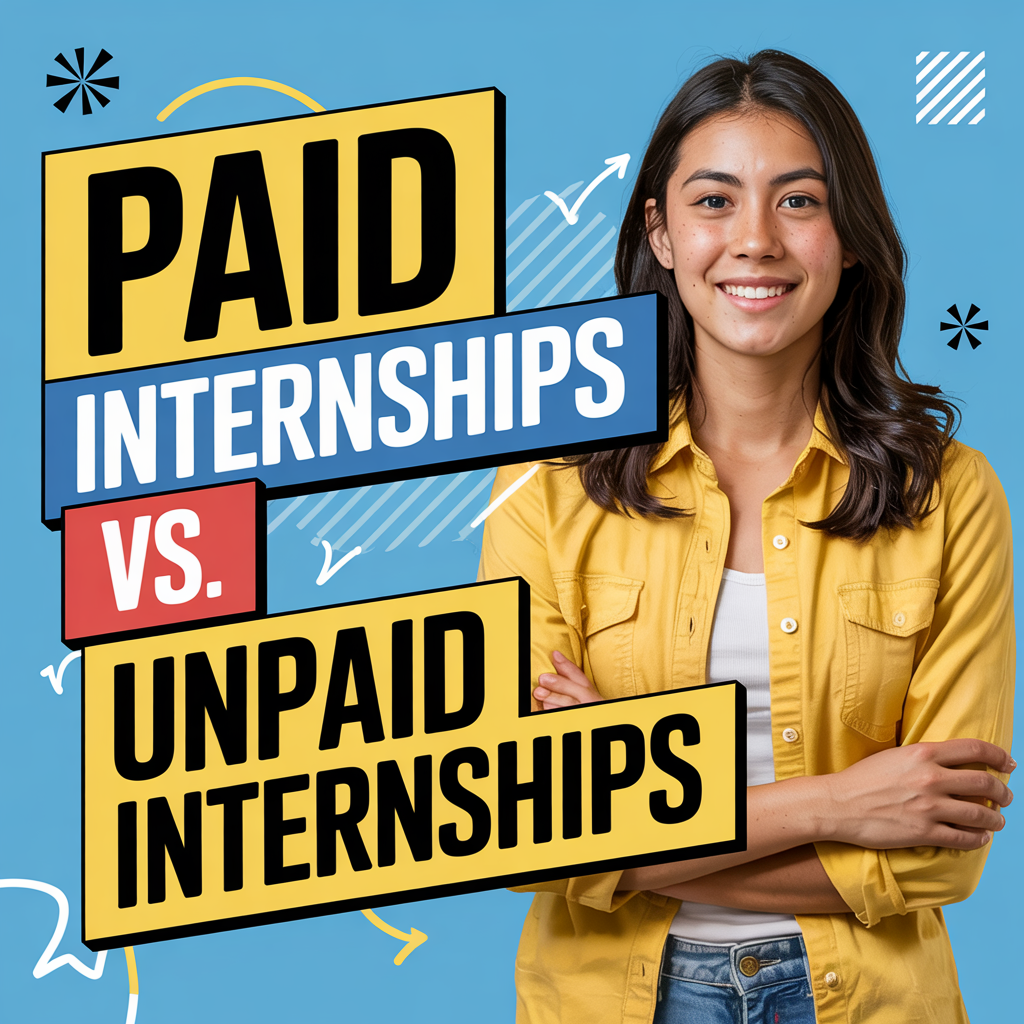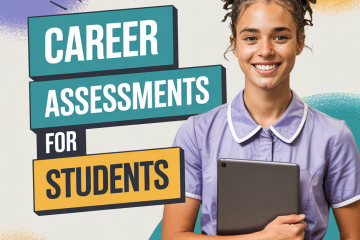How to Follow Up After an Internship Interview: Polite Persistence and Staying Top of Mind

The internship interview marks a significant milestone in your application journey, but it is not the final step. Effective post-interview follow-up is a crucial yet often overlooked element that can significantly influence your chances of securing an internship offer. Following up demonstrates your continued interest, reinforces your qualifications, and allows you to stay “top of mind” with the hiring manager during the decision-making process.
Mastering the art of post-interview follow-up involves striking a delicate balance between polite persistence and respecting professional boundaries. This guide will provide a comprehensive overview of post-interview follow-up strategies, outlining best practices for crafting impactful communications, navigating appropriate timelines, and maximizing your chances of converting an interview into a successful internship offer.

Beyond the Interview: Why Post-Interview Follow-Up is Crucial
While a strong interview performance is essential, post-interview follow-up provides a valuable opportunity to solidify your candidacy and further enhance your application. Engaging in thoughtful and timely follow-up is not merely a formality; it serves several key purposes:
- Expressing Gratitude and Professional Courtesy: Sending a thank-you note immediately after the interview demonstrates basic professional courtesy and expresses your appreciation for the interviewer’s time and consideration. This simple act of gratitude can leave a positive and lasting impression.
- Reinforcing Your Interest and Enthusiasm: Follow-up communications reiterate your continued interest in the internship opportunity, reinforcing your initial enthusiasm expressed during the interview. This proactive demonstration of interest can be a differentiating factor, particularly when employers are evaluating numerous qualified candidates.
- Staying Top of Mind During the Decision Process: In competitive internship selections, hiring managers often interview multiple candidates over a period of time. Thoughtful follow-up helps keep your name and qualifications fresh in their minds as they move through the decision-making process, increasing the likelihood of your application remaining top of consideration.
- Addressing Lingering Questions or Providing Additional Information: Follow-up communications provide an opportunity to address any questions that may have arisen after the interview, clarify any points discussed, or provide additional information that further strengthens your candidacy. This allows you to proactively manage any potential concerns and reinforce your qualifications.
- Demonstrating Professionalism and Attention to Detail: Consistent and professional follow-up demonstrates your attention to detail, organizational skills, and commitment to professional etiquette. These qualities are highly valued by employers and contribute to a positive overall impression of your candidacy.
In essence, post-interview follow-up is your final opportunity to actively influence the hiring decision, reinforcing your strengths and demonstrating your genuine interest in securing the internship. It is a crucial step in maximizing your chances of success beyond the interview itself.
The Essential First Step: The Thank-You Note – Expressing Gratitude and Reinforcing Interest
The thank-you note is the cornerstone of post-interview follow-up and should be considered an essential step immediately following your internship interview. A well-crafted thank-you note serves multiple purposes:
- Expressing Sincere Appreciation: The primary function of a thank-you note is to express genuine gratitude to the interviewer for their time, consideration, and the opportunity to interview for the internship. A sincere expression of thanks is a fundamental element of professional courtesy.
- Reinforcing Your Enthusiasm and Interest (Again): The thank-you note provides a second opportunity to reiterate your strong interest in the internship and the company. Re-emphasizing your enthusiasm reinforces your initial positive impression and demonstrates consistent interest.
- Subtly Reaffirming Key Qualifications (Briefly): While the thank-you note should not be overly focused on re-selling your skills, it can subtly and briefly reaffirm one or two key qualifications or experiences discussed during the interview, further solidifying your fit for the role in the interviewer’s mind.
- Personalizing the Connection: A well-written thank-you note should be personalized, referencing specific points discussed during the interview. Mentioning a particular topic or aspect of the conversation demonstrates your attentiveness, active listening skills, and genuine engagement during the interview itself.
The thank-you note should be concise, professional, and sent promptly, ideally within 24 hours of the interview. It is a critical first step in demonstrating professional etiquette and initiating your post-interview follow-up strategy.
Timing Your Follow-Up: Finding the Right Balance of Persistence
After sending the initial thank-you note, navigating the timing of subsequent follow-up communications requires a delicate balance. Polite persistence is key, but excessive or untimely follow-up can be perceived as overly aggressive or even annoying. Establishing an appropriate follow-up timeline involves considering several factors:
- Interviewer-Provided Timeline (If Any): Pay close attention to any timeline provided by the interviewer during the interview itself. Often, interviewers will give an estimated timeframe for when they expect to make a hiring decision or communicate next steps. Adhere to this timeline as your primary guide for follow-up. If they indicate a decision will be made within two weeks, wait at least two weeks before sending a further follow-up message.
- Standard Professional Norms: In the absence of a specific timeline provided by the interviewer, standard professional norms suggest a reasonable timeframe for initial follow-up is approximately one week after the interview. This allows sufficient time for the interview process to progress without being perceived as impatient.
- Subsequent Follow-Up (If No Response After Initial Follow-Up): If you do not receive a response after your initial follow-up email (sent approximately one week after the interview), a second, more concise follow-up email after another week or two may be appropriate, depending on the typical hiring timelines within the industry and for internship positions. However, avoid sending multiple follow-up emails in rapid succession.
- Respecting Silence: It is important to recognize that silence from the employer may simply indicate that the hiring process is still ongoing, or that they have chosen to move forward with other candidates. While polite persistence is valuable, respecting silence and avoiding excessive follow-up.and respecting silence is equally important. Excessive follow-up, especially in the absence of any response from the employer, can be counterproductive and may be perceived negatively. Hiring managers are often busy and may not be able to respond to every follow-up inquiry, even from strong candidates. It is crucial to learn to interpret silence as a possible indication that the decision process is ongoing, or that the employer has moved forward with other applicants, and to avoid persistent follow-up beyond a reasonable point. Overly frequent or demanding follow-up can be perceived as lacking professionalism or understanding of typical hiring timelines.
Methods of Follow-Up Communication: Email as the Primary Tool
While various communication channels exist, email remains the most professional and widely accepted method for post-interview follow-up in the context of internships. Other methods are generally less appropriate for initial follow-up communication after an interview:
- Email: Email is the preferred method for post-interview thank-you notes and subsequent follow-up messages. It provides a professional and documented form of communication, allowing you to express your gratitude and reiterate your interest in a clear and concise manner. Email also allows the hiring manager to respond at their convenience and maintain a record of your communication. Ensure your email address is professional and your email signature includes your name and contact information.
- Phone Calls: Initiating phone calls for initial post-interview follow-up is generally discouraged unless explicitly invited to do so by the interviewer. Unsolicited phone calls can be perceived as intrusive and disruptive to the hiring manager’s workflow. Unless specifically requested, stick to email for initial follow-up communications.
- LinkedIn Messages: While LinkedIn can be a useful platform for professional networking, it is generally not the most appropriate channel for initial post-interview follow-up thank-you notes or inquiries about application status, unless you have an existing strong connection with the interviewer on LinkedIn and have previously communicated via the platform. Email remains the more conventional and widely accepted method for formal post-interview communication.
- Social Media (Other Platforms): Following up through social media platforms like Twitter, Facebook, or Instagram is highly unprofessional and should be avoided entirely in the context of internship applications. Maintain a clear separation between professional and personal communication channels and adhere to email for all formal post-interview correspondence.
Email provides the optimal balance of professionalism, clarity, and respect for the interviewer’s time and workflow, making it the most effective and appropriate method for post-interview follow-up communications.
Crafting Effective Follow-Up Messages: Content and Tone Considerations
The content and tone of your follow-up messages are critical for conveying professionalism, continued interest, and respect for the hiring process. Effective follow-up messages are concise, personalized, and focused on reinforcing your candidacy without being overly demanding or repetitive.
- Conciseness and Clarity: Keep your follow-up messages brief and to the point. Hiring managers are busy professionals, and concise communication is appreciated. Clearly state the purpose of your follow-up message and avoid lengthy paragraphs or unnecessary details. Ensure your message is easy to read and quickly conveys your intended message.
- Personalization and Specificity: Avoid sending generic or form-letter follow-up messages. Personalize each message by referencing specific points discussed during your interview, reiterating your understanding of the role and company, and tailoring your message to the specific conversation you had with the interviewer. Personalization demonstrates your attentiveness, genuine interest, and attention to detail.
- Positive and Enthusiastic Tone: Maintain a positive and enthusiastic tone throughout your follow-up communications. Reiterate your excitement about the internship opportunity and your eagerness to contribute to the organization. Convey your positive energy and genuine interest in a professional and sincere manner.
- Professional and Respectful Language: Utilize professional and respectful language in all follow-up communications. Maintain a formal tone, avoid slang or overly casual language, and address the interviewer with appropriate professional titles (Mr./Ms./Mx. Last Name). Professional language reinforces your maturity and respect for the hiring process.
- Value-Added Content (Optional, but Strategic): While not always necessary, consider including value-added content in your follow-up messages if you have a relevant and concise piece of information to share. This might include:
- Relevant Article or Resource: If you come across an article or resource directly related to a topic discussed during the interview or relevant to the company’s work, you could briefly share it as a value-add in your follow-up. This demonstrates continued engagement and interest in the field.
- Clarification or Additional Information (If Requested): If the interviewer requested additional information or clarification on a specific point during the interview, your follow-up message is an appropriate place to provide that information concisely and professionally.
- Clear Call to Action (Subtle and Polite): While your primary goal is not to be demanding, you can include a subtle and polite call to action in your follow-up message, reiterating your interest in next steps. This might involve a phrase such as “I am very interested in learning about the next steps in the interview process” or “I look forward to hearing from you regarding the timeline for your decision.” Avoid overly assertive or demanding calls to action.
Polite Persistence vs. Being Overly Aggressive: Navigating the Nuances
The line between polite persistence and being overly aggressive in post-interview follow-up can be subtle. Navigating this nuance is crucial to maintaining a professional image and avoiding negative perceptions. Polite persistence demonstrates continued interest and proactive engagement, while overly aggressive follow-up can be perceived as pushy or impatient.
Polite Persistence (Effective Strategies):
- Timely Thank-You Note: Sending a prompt thank-you note within 24 hours is always considered polite persistence and standard professional etiquette.
- One or Two Thoughtful Follow-Up Emails (Over a Reasonable Timeframe): One or two well-spaced follow-up emails, sent approximately one to two weeks apart after the initial thank-you note and after any interviewer-provided timeline has passed, can be considered politely persistent, demonstrating continued interest without being overly intrusive.
- Concise and Value-Added Communication: Keeping your follow-up messages concise, personalized, and potentially including value-added content (as discussed above) contributes to polite persistence, demonstrating continued engagement and providing a reason for the interviewer to remember your application positively.
- Respectful and Professional Tone: Maintaining a consistently respectful and professional tone throughout all follow-up communications, even if you are feeling anxious about the outcome, is crucial for projecting polite persistence rather than impatience or aggression.
Overly Aggressive Follow-Up (Avoid These Behaviors):
- Multiple Follow-Up Emails in Quick Succession: Sending numerous follow-up emails in rapid succession (e.g., daily or every few days) is generally considered overly aggressive and can be perceived as impatient or demanding. Space out your follow-up communications appropriately, allowing sufficient time for the hiring process to progress.
- Frequent Phone Calls (Unsolicited): Initiating multiple unsolicited phone calls to inquire about your application status is generally considered overly aggressive and intrusive, unless explicitly invited to call. Stick to email for initial and routine follow-up communications.
- Demanding or Entitled Tone: Adopting a demanding or entitled tone in your follow-up messages, implying that you are owed a response or an offer, is highly unprofessional and will likely be perceived negatively. Maintain a respectful and appreciative tone throughout your communications.
- Ignoring Indicated Timelines or Boundaries: Disregarding any timelines or communication preferences indicated by the interviewer and continuing to follow up excessively or through inappropriate channels is a sign of overly aggressive behavior and disrespect for professional boundaries. Adhere to any guidelines or preferences communicated by the employer.
- Contacting Multiple People Within the Organization (Excessively): Avoid contacting multiple individuals within the organization repeatedly and simultaneously to inquire about your application status. Focus your follow-up communications on the primary interviewer or hiring manager you have been in contact with, unless instructed otherwise.
Knowing When to Move On: Recognizing Appropriate Follow-Up Limits
While polite persistence is valuable, knowing when to cease follow-up efforts and move on is equally important. There is a point beyond which continued follow-up becomes unproductive and may even be detrimental to your professional image. Recognizing appropriate follow-up limits involves:
- Respecting Silence (Continued): As previously emphasized, respect silence from the employer. If you have sent a thank-you note and one or two polite follow-up emails over a reasonable timeframe (and after any interviewer-provided timeline has passed) without receiving a response, it is generally advisable to interpret silence as a signal to move on. Continued follow-up beyond this point is unlikely to change the outcome and may be perceived negatively.
- Focus on Other Opportunities: While waiting for responses and engaging in polite follow-up, continue actively pursuing other internship opportunities. Do not put your entire internship search on hold while waiting for a decision from one particular organization. Maintaining momentum in your overall search reduces pressure and ensures you have alternative options available.
- Avoid Fixation on One Opportunity: Avoid fixating on one specific internship opportunity to the exclusion of others. While it is natural to have preferred choices, maintain a broad perspective and recognize that numerous internship opportunities may be a good fit for your skills and career goals. Focusing too intensely on a single opportunity can lead to disappointment and hinder your overall search progress.
- Recognize “No Response” as a Possible Answer: Accept that in some cases, “no response” is effectively the employer’s answer. While it can be disappointing not to receive explicit feedback or a formal rejection, understand that hiring managers are often juggling numerous responsibilities and may not be able to provide personalized responses to every applicant. Interpret silence after reasonable follow-up as a signal to redirect your efforts to other promising opportunities.
Action Plan: Implement Your Post-Interview Follow-Up Strategy Today!
Develop and implement your post-interview follow-up strategy now to maximize your chances of internship success:
- Create a Thank-You Note Template: Prepare a template thank-you note that you can personalize and send immediately after each interview. Having a template ready will streamline the process and ensure prompt follow-up.
- Establish a Follow-Up Timeline Tracker: Create a system (spreadsheet, calendar reminders) to track the date of each interview, any timelines provided by interviewers, and your follow-up communication dates. This tracking system will help you stay organized and manage your follow-up efforts effectively.
- Schedule Time for Post-Interview Follow-Up: Allocate dedicated time in your schedule immediately after each interview to write and send your thank-you note. Treat post-interview follow-up as an essential and non-negotiable step in the application process.
- Draft a Second Follow-Up Email Template (Optional): Prepare a template for a concise second follow-up email that you can adapt and send approximately one to two weeks after your initial thank-you note if you have not received a response. Having a template ready will save time and ensure your follow-up messages are professional and effective.
- Practice Polite Persistence and Respectful Closure: Mentally prepare yourself to practice polite persistence in your follow-up efforts, while also being ready to recognize appropriate follow-up limits and move on to other opportunities if necessary. Develop a balanced and professional approach to post-interview communication.
For students looking to build a professional presence early, platforms like Cirkled In can help you organize your accomplishments and make a memorable impression beyond the interview.
Final Thought: The Follow-Up – Your Final Opportunity to Make a Strong Impression
Post-interview follow-up is not merely an afterthought; it is your final opportunity to make a strong and lasting positive impression, reinforcing your candidacy and maximizing your chances of securing that coveted internship offer. By mastering the art of polite persistence, crafting effective follow-up communications, and understanding the nuances of professional etiquette, you can transform the follow-up process into a powerful tool for
Check out Cirkled In and start owning your future today!
Want more college admissions tips? Check out Cirkled In Library for expert advice and tools to help you build a winning college application and land a spot at your dream school!
![The Future of Work in [Specific Industry]](https://www.cirkledin.com/library/wp-content/uploads/2025/03/Career-Planning-31-360x240.png)


0 Comments